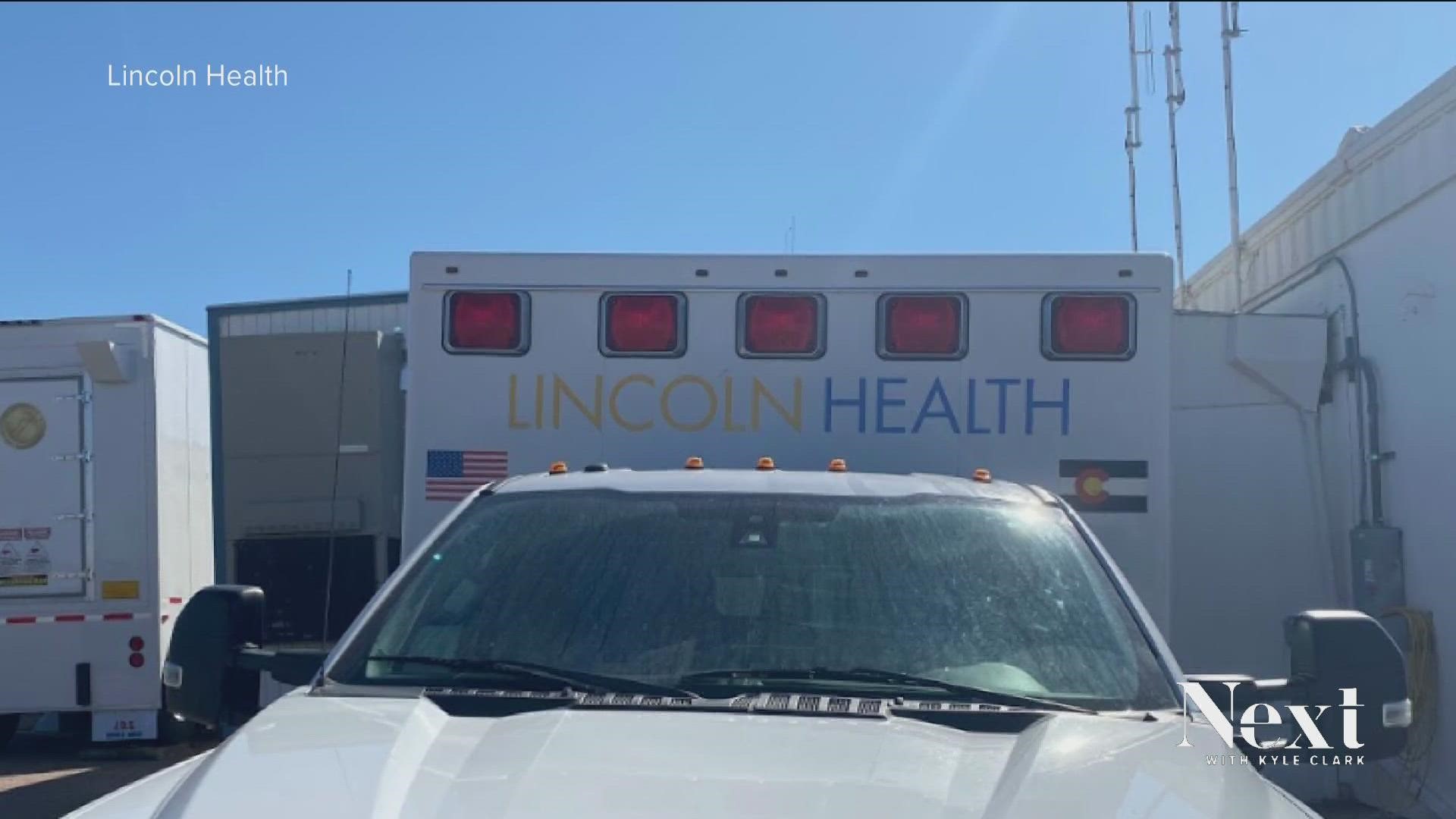DENVER — Hospitals across Colorado are facing major money problems. The Colorado Hospital Association (CHA) said more than half of the hospitals in this state are unable to make ends meet, and this is particularly painful for smaller and rural hospitals.
According to CHA, expenses are going up and outpacing revenue.
In a new report, CHA wrote: "Total expenses in 2022 for Colorado hospitals are 21% higher than pre-pandemic levels, outpacing increases in reimbursements. Rising expenses for staffing – up more than 26% -- and medical supplies have contributed to a $2 billion increase in total expenses."
Inflation is also hurting budgets, coupled with COVID-19 relief dollars drying up.
The study also said: "While hospital discharges and inpatient surgeries have decreased since 2019, patient days and length of stay are on the rise, indicating that patients have more severe health needs than prior to the pandemic. With labor shortages and closure of post-acute care facilities, hospitals are caring for patients longer, resulting in increased expense."
Tom Rennell, CHA senior vice president of financial policy and data analytics, said the current status means hospitals can focus only on the short-term.
"And you know, and that puts it at risk, right, the continuing high quality and accessible care, the great care that we've been able to provide to patients here in Colorado, for the long-term," Rennell said.
More than half of the struggling facilities -- 27 of them -- are rural, while rural hospitals helped 526,000 patients in 2021.
"We've been operating zero or in negative margins for several years," said Kevin Stansbury, the chief executive officer at Lincoln Health. "But this is starting to wear on infrastructure."
Lincoln Health is the only hospital on the Interstate 70 corridor between Denver and Burlington, a 180-mile stretch.
Stansbury said the biggest difference for his hospital versus some urban hospitals is a lack of adequate financial reserves.
"I don't have a whole bunch of cash that I can fall back on in lean years," he said.
It also makes it hard to stay competitive when it comes to salaries. So, there are some tough conversations about how to survive happening.
"One of the examples is OB (obstetrics) care in Colorado and rural areas," said Stansbury.
"There are three, maybe four hospitals on the Eastern Plains, east of where we are, that offer OB services and many of them over hundred miles away from one another. We've had to have the hard conversations [about] how we offer that service to a community with a growing population. Couples of child-bearing age who want to live in rural areas -- but it's difficult to convince them to stay if we can't offer these essential services."
It's resulting in dangerous situations that Stansbury said a lot of people don't know are happening.
"We offer all pre-natal care, but deliveries have to be done in the city," said Stansbury. "We've had a couple employees deliver babies on the side of road between here and the city because they couldn't make it in time. I get emotional, forgive me, we've got to do better. We have to do better."
But doing better is hard because financial pressures make expanding services like OB care virtually impossible.
"We're going to figure out a way to make it work because it is important," he added. "We believe the idea that where you live shouldn't determine if you live. What happens is we're going to have to start evaluating different services. Can we really provide locally or partnership? There will be care here, I just don't know how comprehensive."
Rennell said hospitals of all sizes are looking at ways to save money.
"We have many different types and varieties of hospitals throughout the state," he said.
"I think everyone's looking at their costs, all of their costs, they're looking at services. Some have been able to build up reserves in the past or savings, and they're tapping into those savings. It's not a one-stop answer for any hospital. They're trying to evaluate what the community and the patients in that community need. And just try to keep a reasonable balance," said Rennell.
Stansbury also said rural hospitals are taking a close look at reimbursement rates, which is another reason they are falling behind, and that they are going to ask the state legislature to study and evaluate how rural hospitals are paid. He is also hoping for more capital for investments.
SUGGESTED VIDEOS: Full Episodes of Next with Kyle Clark

